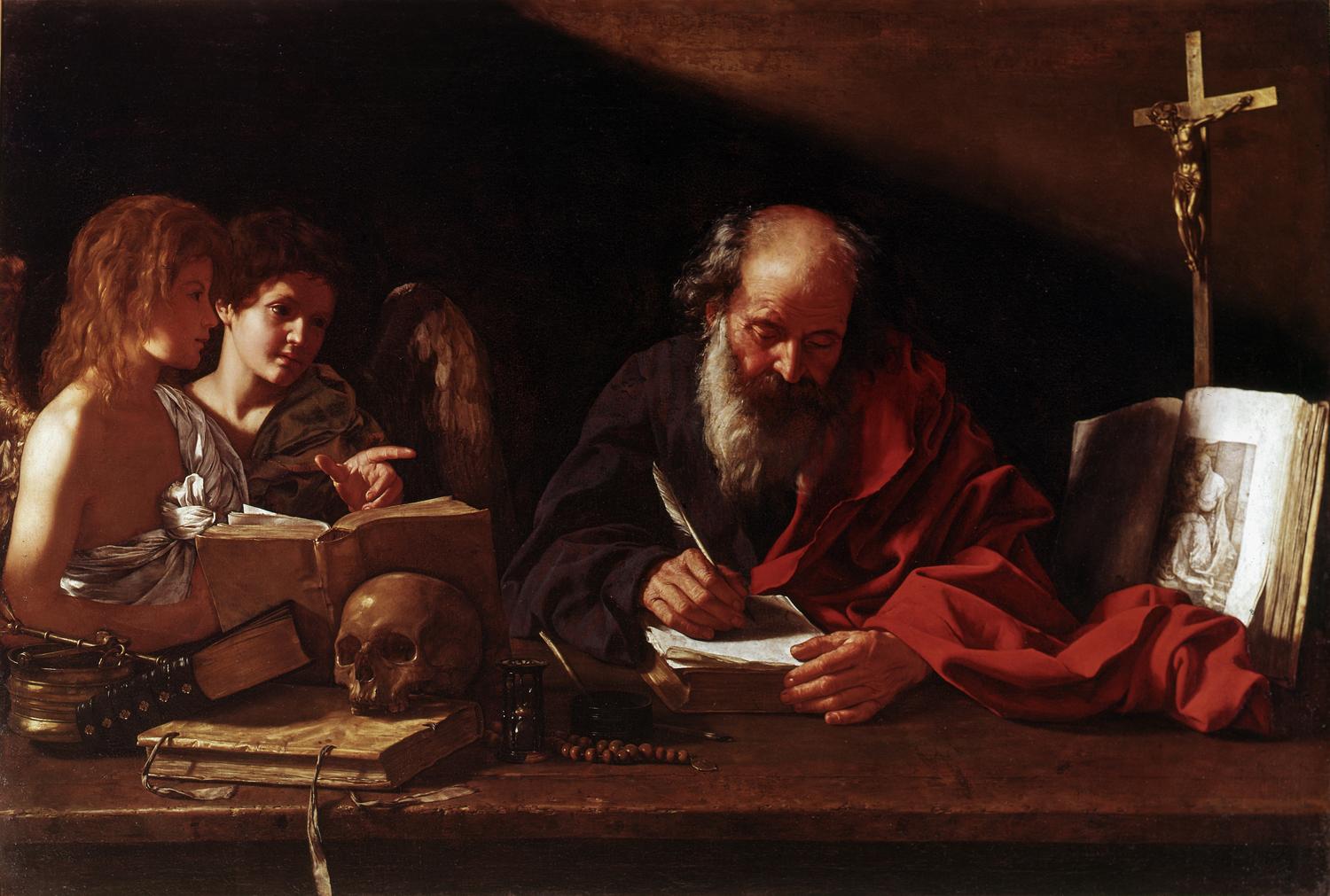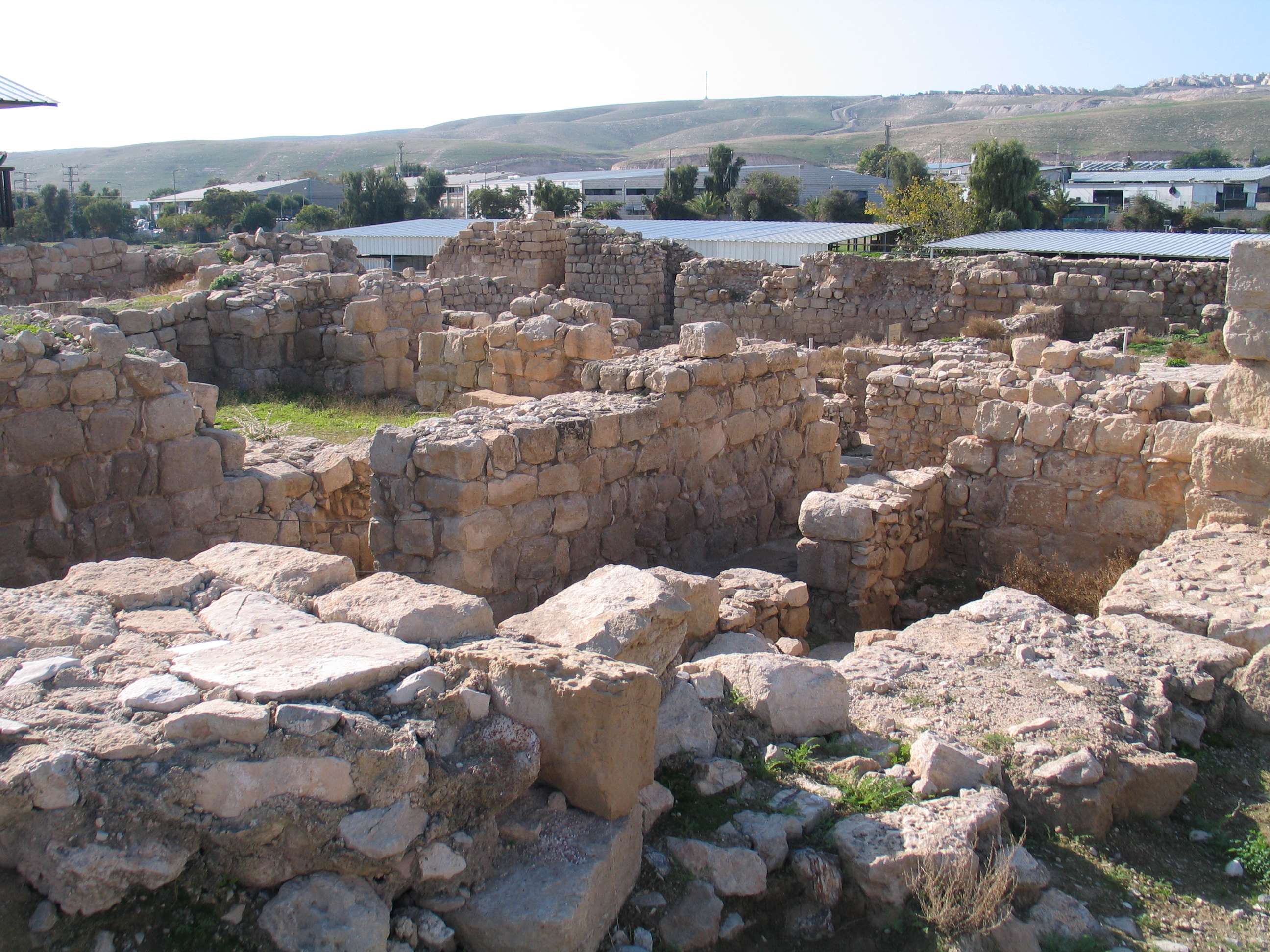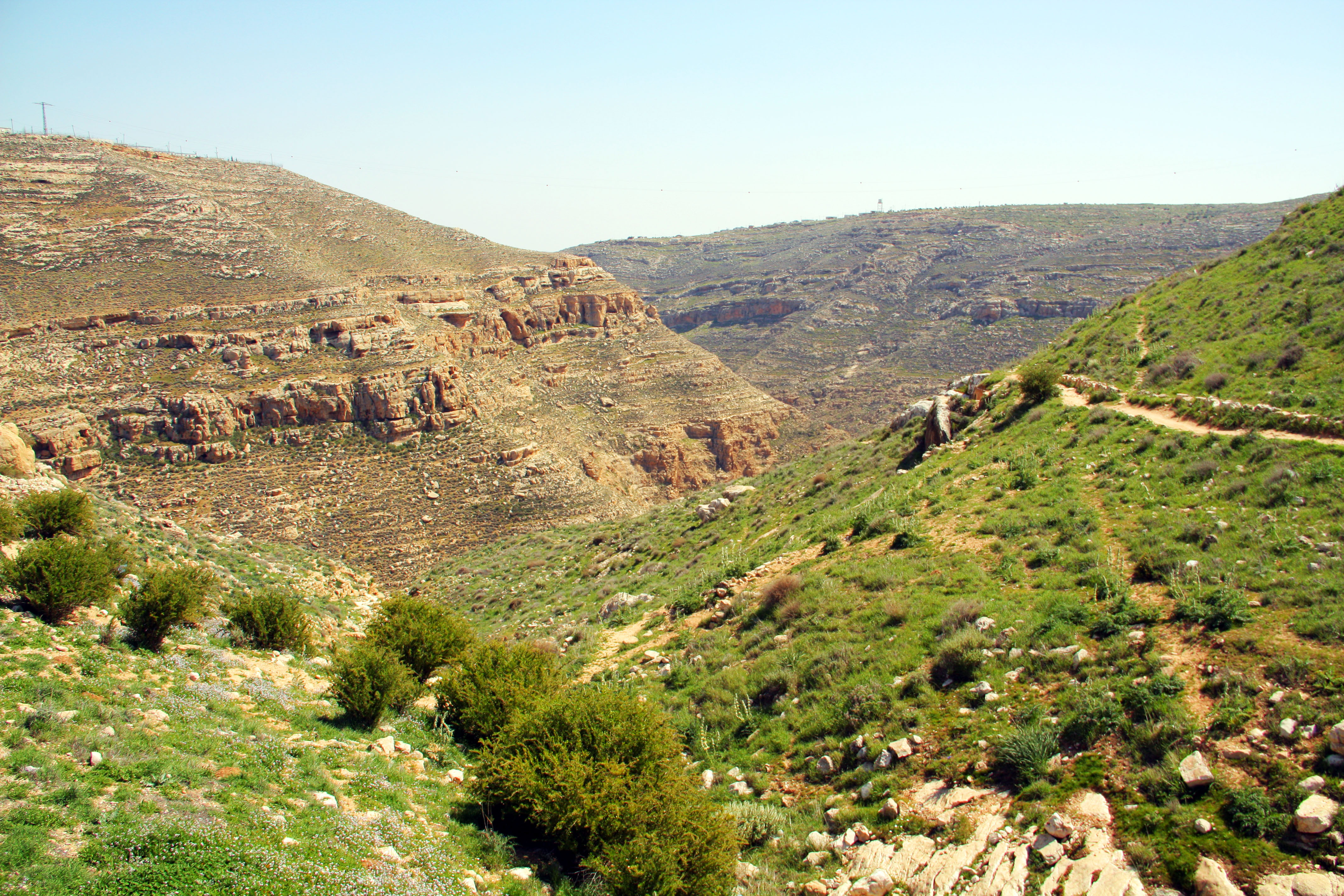|
Lavra
A lavra or laura (; Cyrillic: Ла́вра) is a type of monastery consisting of a cluster of cells or caves for hermits, with a church and sometimes a refectory at the center. Lavra monasteries operate within the Orthodox and other Eastern Christian traditions; the name is also used by some Catholic communities. The term in Greek initially meant a narrow lane or an alley in a city.. In a later Eastern Orthodox context, the term took the new meaning of large and important monastery. History Byzantine laura/lavra From the fifth century the Greek term ''laura'' could refer specifically to the semi-eremitical monastic settlements of the Judaean Desert, where lauras were very numerous. The first lauras of Palestine were founded by Chariton the Confessor (born 3rd century, died c. 350): the Laura of Pharan (now Wadi Qelt) northeast of Jerusalem, the Laura of Douka on the Mount of Temptation west of Jericho, and Souka Laura or Old Laura in the area of Tuqu' in Wadi Khureitun. Sa ... [...More Info...] [...Related Items...] OR: [Wikipedia] [Google] [Baidu] |
Sabbas The Sanctified
SabasPatrich (1995). (439–532), in Church parlance Saint Sabas or Sabbas the Sanctified (), was a Cappadocian Greek monk, priest, grazer and saint, who was born in Cappadocia and lived mainly in Palaestina Prima. He was the founder of several convents, most notably the one known as Mar Saba, in Palestine. The saint's name is derived from ''Sabbāʾ'' "old man". Life Early life St Sabbas was born the son of John, a military commander, and Sophia, at Moutalaske near Caesarea of Cappadocia. The name of the village has no known meaning in Greek, but the Aramaic "Mata la zkha" translates as "Village of Victory". Journeying to Alexandria on military matters, his parents left their five-year-old son in the care of an uncle. When the boy reached eight years of age, he entered the nearby monastery of Bishop Flavian of Antioch. The gifted child quickly learned to read and became an expert on the Holy Scriptures. Sabbas resisted his parents' pressure to return to the world and enter ... [...More Info...] [...Related Items...] OR: [Wikipedia] [Google] [Baidu] |
Mount Of Temptation
Mount of Temptation, in Palestinian Arabic (), is a mountain over the city of Jericho in the West Bank, in the State of Palestine; ancient Christian tradition identifies it as the location of the temptation of Jesus described in the New Testament Gospels of Matthew, Mark, and Luke, in which it is said that, from "a high place", the Devil offered Jesus rule over all the kingdoms of the world. The city of Jericho lies at the feet east of Mount Quruntul, at below sea level, with the nearby Jordan River and the Dead Sea at even lower elevations, further to the east and southeast. The mount has around of prominence over Jericho, which translates to an elevation of above sea level, and offers a commanding view of its fabled surroundings to the east. Quruntul has been the location of a Seleucid and Maccabean fortress known as Dok (also Doq and Dagon). It was the scene of the assassination of Simon Maccabeus and two of his sons in 134 BC. Held by the last Maccabean ruler, An ... [...More Info...] [...Related Items...] OR: [Wikipedia] [Google] [Baidu] |
Chariton The Confessor
Chariton the Confessor (Greek: Χαρίτων; mid-3rd century, Iconium, Asia Minor – , Judaean desert) was an early Christian monk. He is venerated as a saint by both the Western and Eastern Churches. His remembrance day is September 28. Life Sources We know about his ''vita'' from the 6th-century "Life of Chariton", written by an anonymous monk, which holds elements supported by modern archaeological excavations. Early life Chariton was a native of Iconium in the Byzantine province of Lycaonia. Under the reign of Emperor Aurelian (270-275) he was tortured and came close to become a martyr during a persecution against Christians. Released from prison after Aurelian's death, he regretted not having died as a martyr. Pharan near Jerusalem After his release in 275, during a pilgrimage to Jerusalem and other holy places, Chariton was abducted by bandits and brought to a cave in the Pharan Valley (upper Wadi Qelt). The traditional account states that his abductors died by d ... [...More Info...] [...Related Items...] OR: [Wikipedia] [Google] [Baidu] |
Hermits
A hermit, also known as an eremite (adjectival form: hermitic or eremitic) or solitary, is a person who lives in seclusion. Eremitism plays a role in a variety of religions. Description In Christianity, the term was originally applied to a Christian who lives the eremitic life out of a religious conviction, namely the Desert Theology of the Old Testament (i.e., the 40 years wandering in the desert that was meant to bring about a change of heart). In the Christian tradition the eremitic life is an early form of monastic living that preceded the monastic life in the cenobium. In chapter 1, the Rule of St Benedict lists hermits among four kinds of monks. In the Roman Catholic Church, in addition to hermits who are members of religious institutes, the Canon law (canon 603) recognizes also diocesan hermits under the direction of their bishop as members of the consecrated life. The same is true in many parts of the Anglican Communion, including the Episcopal Church in the Unit ... [...More Info...] [...Related Items...] OR: [Wikipedia] [Google] [Baidu] |
Euthymius The Great
Euthymius the Great (377 – 20 January 473) was an abbot in Palestine. He is venerated in both Roman Catholic and Eastern Orthodox Churches. Euthymius' '' vita'' was written by Cyril of Skythopolis, who describes him as the founder of several monasteries in the Judaean desert, while remaining a solitary monk in the tradition of Egyptian monasticism. He nevertheless played a decisive role in helping the decisions of the Council of Chalcedon (451) prevail in Jerusalem, in spite of the majority of the monks in the region opposing it. Life The '' vita'' of Euthymius has been written by Cyril of Scythopolis. Melitene Euthymius was born in Melitene in Lesser Armenia in 377, in a pious family of noble birth. According to Christian tradition, his parents, Paul and Dionysia, had prayed for a son at the church of Saint Polyeuctus in Melitene. When the child was born, they named him ''Euthymius'', meaning "good cheer". Euthymius was educated by Bishop Otreius of Melitene, who ... [...More Info...] [...Related Items...] OR: [Wikipedia] [Google] [Baidu] |
Eremitic
A hermit, also known as an eremite (adjectival form: hermitic or eremitic) or solitary, is a person who lives in seclusion. Eremitism plays a role in a variety of religions. Description In Christianity, the term was originally applied to a Christian who lives the eremitic life out of a religious conviction, namely the Desert Theology of the Old Testament (i.e., the 40 years wandering in the desert that was meant to bring about a change of heart). In the Christian tradition the eremitic life is an early form of monastic living that preceded the monastic life in the cenobium. In chapter 1, the Rule of St Benedict lists hermits among four kinds of monks. In the Roman Catholic Church, in addition to hermits who are members of religious institutes, the Canon law (canon 603) recognizes also diocesan hermits under the direction of their bishop as members of the consecrated life. The same is true in many parts of the Anglican Communion, including the Episcopal Church in the Unite ... [...More Info...] [...Related Items...] OR: [Wikipedia] [Google] [Baidu] |
Wadi Khureitun
Wadi Khureitun (Arabic; also spelled Khareitoun, Khareitun, Haritoun) or Nahal Tekoa (Hebrew) is a wadi in a deep ravine in the Judaean Desert in the West Bank, west of the Dead Sea, rising near the Israeli settlement of Tekoa. Name The Hebrew name, Nahal Tekoa ("Tekoa Stream"), and the English name used in some Christian contexts, Tekoa Valley, is derived from the ancient Judahite town of Tekoa. The Arabic name, Wadi Khureitun, comes from the early Christian hermit, Chariton, who founded his third lavra in this valley, whose ruins are now known in Arabic as Kirbet ('ruins of') Khureitun. The monastery, founded in about 345, was known at different times as Souka, the Old Laura, and as the monastery of Chariton, the latter name being preserved in the Arabic name of the wadi. Description, history, archaeology A hiking path on the west of the wadi passes a number of prehistoric caves on its way south to the Chariton Monastery ruins. The archaeological Stone Age (Mesolithic and ... [...More Info...] [...Related Items...] OR: [Wikipedia] [Google] [Baidu] |
Great Lavra
The Monastery of Great Lavra () is the first monastery built on Mount Athos, on the Athos peninsula in geographical Macedonia, northeastern Greece. It is located on the southeastern foot of the Mount at an elevation of . The founding of the monastery in AD 963 by Athanasius the Athonite marks the beginning of the organized monastic life at Mount Athos. At the location of the monastery, there was one of the ancient cities of the Athos peninsula, perhaps Akrothooi, from which the sarcophagi of the monastery that are in the oil storage house come. The history of the monastery is the most complete compared to the history of the other monasteries, because its historical archives were preserved almost intact. It is possible that the study of these archives may contribute to the completion of the knowledge of the history of other monasteries, whose archives were partially or completely lost. Founding The founder of Great Lavra, Athanasius, began the construction of the buildings in ... [...More Info...] [...Related Items...] OR: [Wikipedia] [Google] [Baidu] |
Mar Saba
The Holy Lavra of Saint Sabbas, known in Arabic and Syriac as Mar Saba (; ; ; ) and historically as the Great Laura of Saint Sabas, is a Greek Orthodox monastery overlooking the Kidron Valley in the Bethlehem Governorate of Palestine, in the West Bank, at a point halfway between Bethlehem and the Dead Sea. The monks of Mar Saba and those of subsidiary houses are known as Sabaites. Mar Saba is considered one of the world's oldest (almost) continuously inhabited monasteries, and it maintains many of its ancient traditions. One in particular is the restriction on women entering the main compound. The only building women can enter is the Women's Tower, near the main entrance. History Byzantine period The monastery was founded by Sabbas the Sanctified in 483 on the eastern side of the Kidron Valley, where, according to the monastery's website, the first seventy hermits gathered around the hermitage of St Sabbas. Later on, the laura relocated to the opposite, western side of the ... [...More Info...] [...Related Items...] OR: [Wikipedia] [Google] [Baidu] |
Wadi Qelt
Wadi Qelt (; Qelt is also spelled Qilt and Kelt, sometimes with the Arabic article, el- or al-), in Hebrew Nahal Prat (), formerly Naḥal Faran (Pharan brook), is a valley, riverine gulch or stream ( ', " wadi"; , "nahal") in the West Bank, originating near Jerusalem and running into the Jordan River near Jericho, shortly before it flows into the Dead Sea. Wadi Qelt is currently the generic name used for the entire stream, but in Arabic each sections has its own name: the upper course is called Wadi Fara, the middle one - Wadi Fawar, and just the lower - Wadi Qelt. The wadi attracts with a number of natural, biblical, and archaeological highlights: a well preserved natural environment with a rich wild bird population. Geography The stream flowing eastwards down the valley that cuts through the limestone of the Judean Mountains, has three perennial springs, each with an Arabic and Hebrew name: 'Ayn Farah/En Prat, the largest one at the head of the valley; 'Ayn Fawar/En Mab ... [...More Info...] [...Related Items...] OR: [Wikipedia] [Google] [Baidu] |
Monastery
A monastery is a building or complex of buildings comprising the domestic quarters and workplaces of Monasticism, monastics, monks or nuns, whether living in Cenobitic monasticism, communities or alone (hermits). A monastery generally includes a place reserved for prayer which may be a chapel, Church (building), church, or temple, and may also serve as an Oratory (worship), oratory, or in the case of Cenobium, communities anything from a single building housing only one senior and two or three junior monks or nuns, to vast complexes and estates housing tens or hundreds. A monastery complex typically comprises a number of buildings which include a church, dormitory, cloister, refectory, library, Wiktionary:balneary, balneary and Hospital, infirmary and outlying Monastic grange, granges. Depending on the location, the monastic order and the occupation of its inhabitants, the complex may also include a wide range of buildings that facilitate self-sufficiency and service to the commun ... [...More Info...] [...Related Items...] OR: [Wikipedia] [Google] [Baidu] |
Gerasimus Of The Jordan
Gerasimus of the Jordan (, Abba Gerasimus, Holy Righteous Father Gerasimus of Jordan—also spelled Gerasimos or Gerasim) was a Christian saint, monk and abbot of the 5th century AD. Biography Gerasimus was born into a wealthy family in the province of Lycia,''Saint Gerasimus, from the Russian Lives of the Saints based on the Menologion of St. Dimitry of Rostov, Orthodox Church in America.'' the southern part of Asia Minor, but he left his family wealth and worldly affairs to become a monk. He departed for the region Thebaid in the Egyptian desert, later again returning to his native Lycia. About the middle of 5th century Saint Gerasimus went to Palestine and settled in the wilderness near the Jordan River. There he established a monastery and became known for his righteous life of asceticism and prayer. He is reputed to have attended to the Fourth Ecumenical Council at Chalcedon in 451. The anecdote of Gerasimus and the lion, when the saint tamed the animal by removing a thorn ... [...More Info...] [...Related Items...] OR: [Wikipedia] [Google] [Baidu] |








